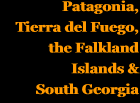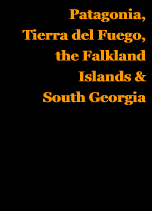Surviving relics
A similar 0-6-2T
The Jung 0-6-2T mentioned in the locomotives page was preserved for many years in the barracks at Puente Alto in the south-east suburbs of Santiago. However, it was recently moved to Melocoton to be restored for use on a section of its old route being repened as a tourist attraction.
This loco is identical to the earliest type 'a' 0-6-2Ts to run on Chiloé.
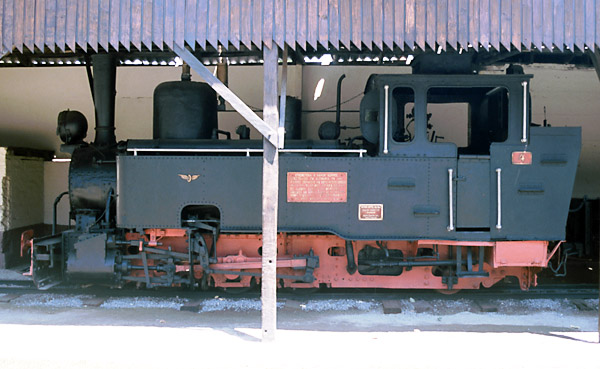
The excellent state of preservation of this loco is illustrated below by a view of the cab fittings; items which commonly disappear from plinthed locos kept in less secure conditions than the army barracks where this one stood.
.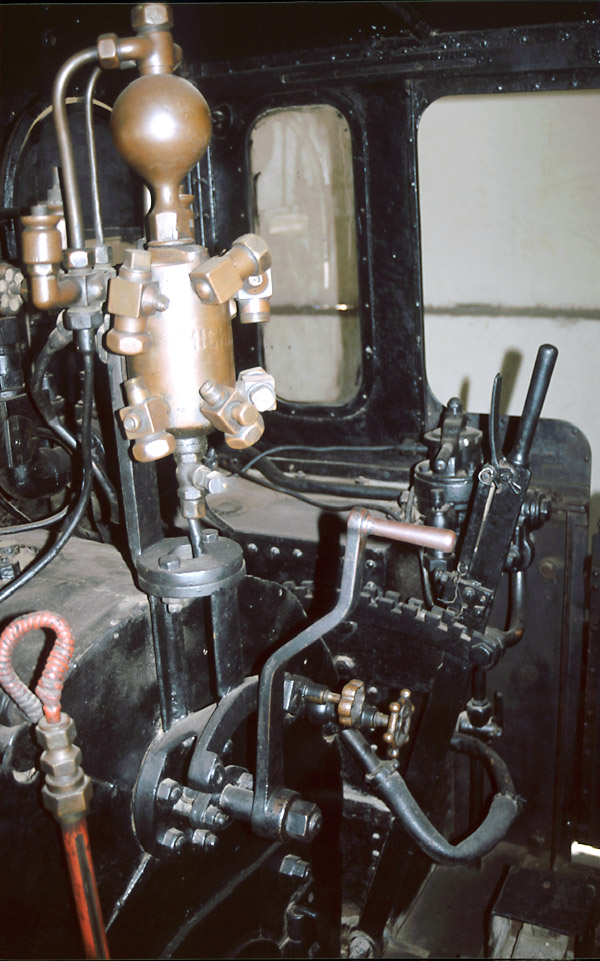
An 0-6-0T in Castro
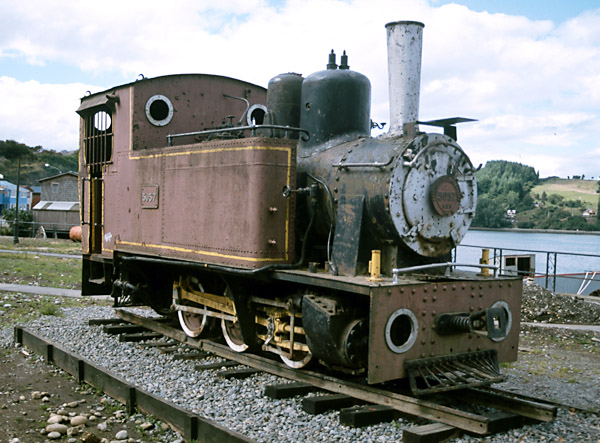
This Henschel 0-6-0T stands on a short length of track down on the waterfront in Castro, opposite the Blue Unicorn Hotel. By 2001 it had been moved from the opposite side of the road, which suggests some development was about to take place. Apparently it was previously preserved in the San Bernardo Works at Santiago. The MSB on the number plate actually stands for Maestranza San Bernardo and implies that San Bernardo was the loco's 'home' works.
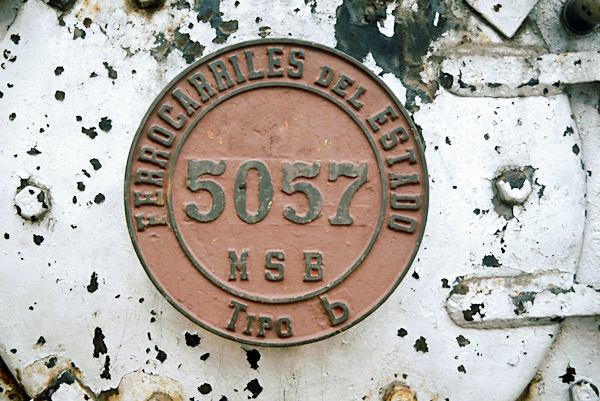
Whilst the engine is not in bad external condition, the cab is not secure and has been somewhat mistreated. It looks as if a rebuild at some time has given the loco new spectacle plates to the cab, for the small round spectacles (and in the buffer beam!) are most un-German.
A standard coach, in Puente Alto
The coach below is also preserved in the barracks at Puente Alto. Structurally it is identical to those which ran in Chiloé, but this interior shot shows that the army officers received greater comfort than the Chilotes, having individual seats and tables instead of long benches. Reports from Chiloé suggest that some coaches there had longitudinal seats facing inwards, but they may have varied.
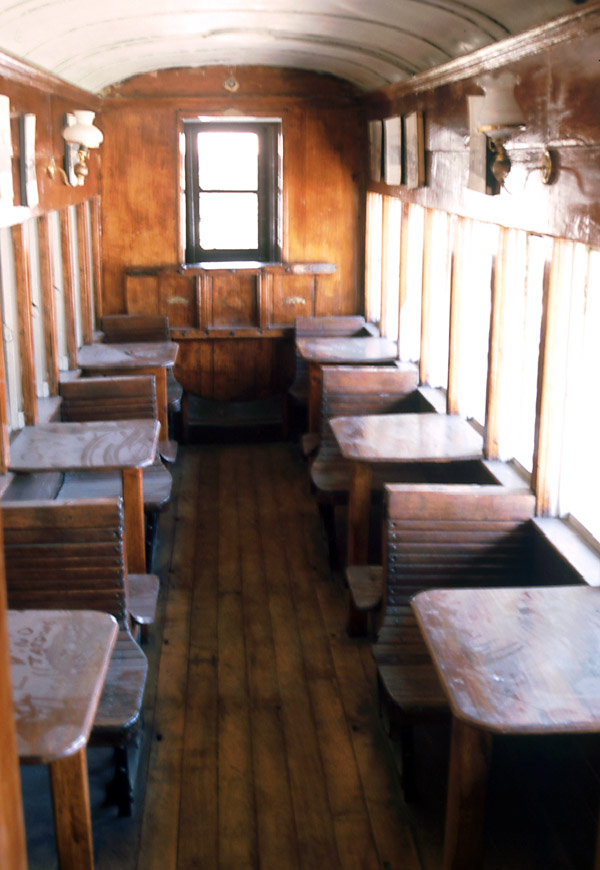
Wagons in Ancud Museum
Ancud museum has a collection of outdoor exhibits in a courtyard. The photos below show three four-wheeled wagon chassis, looking as though they were retrieved from the harbour, and a bogie wagon chassis. These were on display in 2001, but have recently been removed during a refurbishment of the museum. Their current whereabouts are unknown.
They could usefully salvage the coach chassis and bogies from Butalcura, for it is much more complete than anything they have.
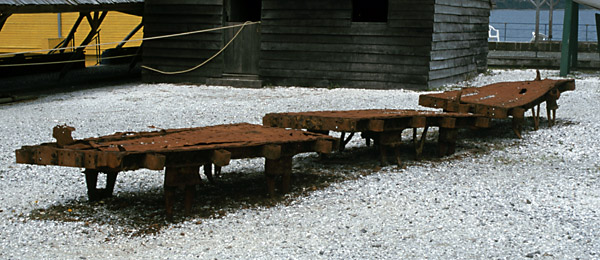
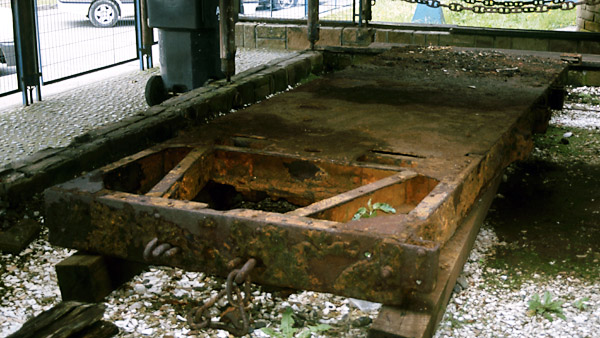
They also have the cowcatcher (pilot) from one of the steam locos, down at the foot of the steps on the sea front, in a small exhibits collection.
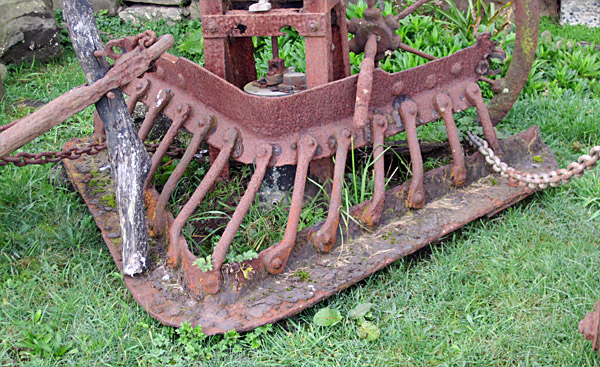
A surviving piece of rail
Whilst the track seems to have been moved promptly and efficiently after the closure, a surviving piece of rail remains in private hands near Pupelde. As the photo shows, it was rolled by the Belgian Ougree company, possibly a result of the initial survey having been done by a Franco-Belgian consortium.
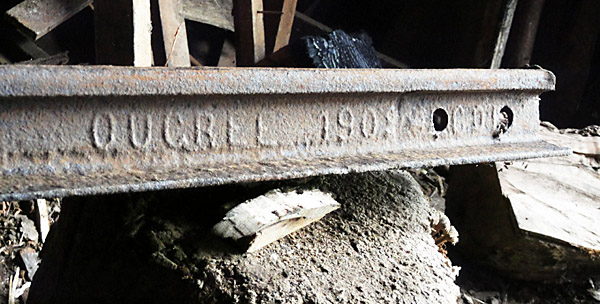
Photographs and Publications
Ancud Museum has a small but well-laid-out display on the railway. In Castro the very helpful library in the Centro Cultural has copies of two booklets produced on the subject in the past, though none for sale. Castro Museum has nothing on display and they were most reluctant to show even the few copy photos that they have.
The Gilberto Provoste collection of photos of Chiloe, taken by a professional photographer whose career was spent on the island, is now at the Museo Fuerte de Niebla near Valdivia. However, this has not yet been searched.
Survivors of Chiloe's many 'locomovils'
Steam enthusiasts might like to examine a few of Chiloé's many old 'locomovils', or 'portable' engines. These were once used in their dozens by the many sawmills on the island. This collection of four are displayed at the opposite end of Castro's waterfront to the Henschel, next to the craft market. Others in more derelict condition can be spotted all over the island.
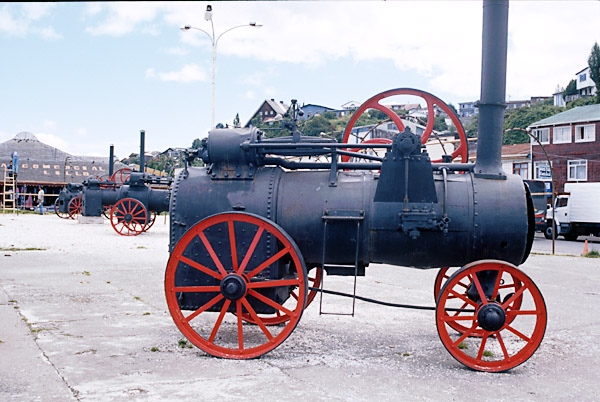
29-10-11
|
